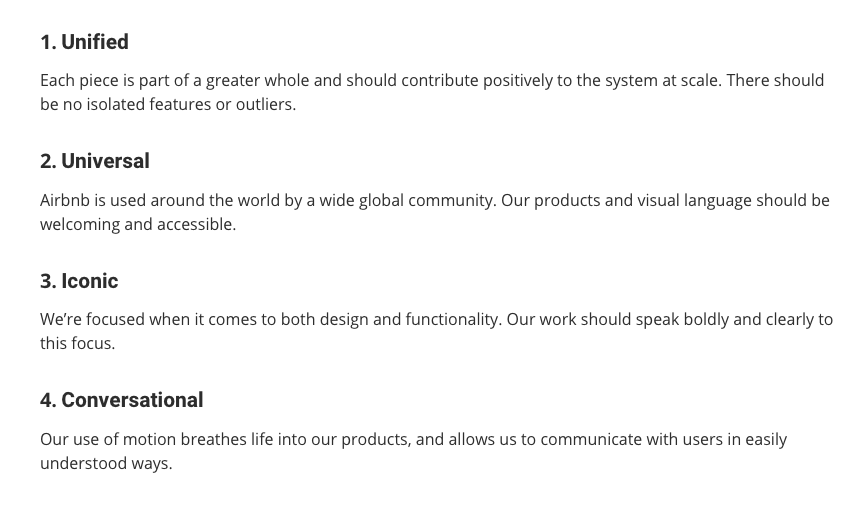
If you haven’t read part 1 of Design Systems, please take the time to read that now.
What are design principles
We talked a little last time about what principles are. Basically they are the purpose behind a product when we are designing the interface. Every pattern that is created needs to be checked against the principles.
Trying to create and form principles can be a challenge at the start as there might be some confusion as to what they really are, or what they should be. It could be as simple as the focus of the brand, culture, or process. For sure it can take a few iterations to see what works for your team.
One mistake that companies try to accomplish when defining principles is they try to quantify them against some form of metrics to be measured against. This is ill thought.
One thing that should be done, is that everyone agrees to what they are. Unifying the team with principles will make sure the principles are followed correctly and efficiently.
Effective Principles
All principles should have certain qualities to be effective. In the end the principles just are guidelines that capture what good design means to the team and how to achieve it.
Principles should be authentic. Please don’t use buzz words that ultimately don’t mean anything to anyone outside a board room filled with executives. A saying just as “Make it simple” is only as tired as your design that results from it is going to be. A better statement would be something like “No needless parts”. It is much more descriptive that captures the essence of the principle.
Principles should also be actionable and practical. Do not shoot for the moon when you are trying to go across the street. It should be clear as to what you are trying to achieve. For example a principle such as “Only one number 1 priority” tells the team where to focus.
It is recommended that you define at least 3 simple principles to define your interface. Let’s take Airbnb’s principles for example. “Unified”, “Universal”, “Iconic”, and “Conversational”.

“When we design a new component, we want to make sure it addresses all four of those. If we didn’t have a set of principles it would be difficult to agree on things. We want to make sure each piece lives up to it”
Roy Stanfield - Principle Interaction Designer Airbnb
Defining Your Principles
Defining your principles should be done as a collective team. It should not however be done with one sitting. Time should be taken to make sure it is done correctly. As the saying goes “Make sure you sleep on it”.
When you start, make sure you start with a purpose. Try to make sure your goals as well as the goals of your client/visitors are being addressed.
Another good practice is to take all the team members and individually write down what good design means for the product. How would they explain it in an easy way that non-designers could understand. This is a good way to find common and shared themes.
It’s important to identify the correct audience with the principles. Who are you defining them for? They should be for the ones that are directly involve in the creation of the product. This includes designers, developers, content producers, and marketing professionals. Don’t fall into the trap of defining it for executives and managers. As necessary as these positions are, they will not being using the principles and often inject too much unnecessary complications into the mix.
Test and Evolve
As you use your principles, you will find that thy might either be not focused or clear enough. There is absolutely nothing wrong with readdressing and evolving the principles to shape what direction you want it to go in. Just don’t fall into a habit where you are redefining your principles far too often, or not often enough. Make sure they are being tested, evaluated and refined appropriately.